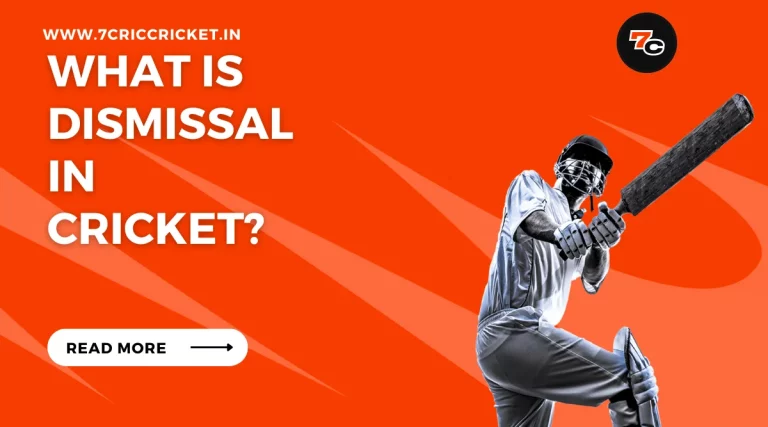What Is Wide in Cricket?
In the game of cricket, a wide is a term used to describe an illegal delivery by the bowler. It occurs when the ball is bowled too far away from the batsman, making it difficult for them to play a shot.
This article explores the definition, determination, consequences, and strategies to avoid bowling a wide. Additionally, it addresses common misconceptions surrounding wides in cricket.
Up to 75% Reload Bonus on Aviator
Up to 75% Reload Bonus on Aviator
- UPI, Paytm, gPay & PhonePe withdrawals
- Fast deposits with UPI
- 300% Welcome Bonus up to ₹10,000
Gain a deeper understanding of wides and enhance your cricket knowledge with this insightful and informative read.
Key Takeaways
Hide- A wide in cricket is a delivery outside the batsman's reach on the leg side.
- The umpire determines whether a delivery is wide based on specific criteria, considering the position of the batsman, the line and length of the delivery, and the batsman's opportunity to play the ball.
- Consistent line and length help minimize the occurrence of wides, and bowlers with control over swing and spin can stay within the permissible limits.
- Wides can have significant consequences, resulting in penalty runs for the batting team, impacting the run rate and the overall outcome of the game, and affecting the confidence and performance of both teams.
Definition of a Wide
A wide in cricket is defined as a delivery that is bowled outside the batsman’s reach on the leg side and is not playable without moving their feet.
This is one of the many bowling rules in cricket that aims to maintain a fair balance between the batsman and the bowler.
When a delivery is considered a wide, the umpire makes the decision based on certain criteria.
The umpire takes into account the position of the batsman, the line and length of the delivery, and whether the batsman had any reasonable opportunity to play the ball.
The concept of a wide is crucial in cricket as it ensures that the bowler does not gain an unfair advantage by bowling deliveries that are excessively wide of the batsman.
It also protects the batsman from being unfairly dismissed due to deliveries that are practically impossible to hit.
The umpire’s decision regarding a wide can sometimes be subjective, as it requires judgment and interpretation of the bowling rules.
However, it is essential for the umpire to make consistent and fair decisions to maintain the integrity of the game.
Understanding the definition and interpretation of a wide in cricket is vital for both players and spectators. It allows for a deeper appreciation of the game and promotes a fair and competitive environment on the field.
How a Wide Is Determined
To determine a wide in cricket, umpires consider specific criteria including the position of the batsman, the line and length of the delivery, and the reasonable opportunity for the batsman to play the ball.
The umpire plays a crucial role in determining whether a delivery is wide or not. They carefully observe the position of the batsman and ensure that the delivery falls within the appropriate guidelines.
To improve accuracy in bowling and minimize the occurrence of wides, bowlers employ various techniques. These techniques include:
- Consistent line and length: By consistently hitting the right line and length, bowlers minimize the chances of their deliveries being considered wides.
- Control over swing and spin: Bowlers with good control over swing and spin can manipulate the movement of the ball, making it easier to bowl within the permissible limits.
- Practice and repetition: Regular practice helps bowlers develop muscle memory, enabling them to consistently bowl within the defined parameters.
- Effective communication with the umpire: Establishing clear communication with the umpire about their intended line and length can help bowlers avoid wides.
Understanding the umpire’s role in determining a wide and employing techniques to improve accuracy in bowling are crucial for both bowlers and teams to avoid unnecessary penalties.
Transitioning into the subsequent section about the consequences of a wide, let’s explore the impact of wides on the game.
Consequences of a Wide
The occurrence of a wide in cricket can result in penalty runs being awarded to the batting team. This can have a significant impact on the run rate and the overall outcome of the game.
When a wide is called, an additional run is added to the batting team’s score, without the need for the batsman to make any effort.
This means that the run rate of the batting team increases without any effort on their part, potentially giving them an advantage over the bowling team.
Furthermore, the effect of a wide on team morale should not be underestimated. For the bowling team, it can be demoralizing to concede extra runs without the batsman even having to play a shot.
This can lead to a loss of confidence and a decrease in overall performance. On the other hand, for the batting team, the occurrence of a wide can provide a boost in morale, as it represents an opportunity to increase their score without taking any risks.
In summary, a wide in cricket can have a significant impact on the run rate and the morale of both teams.
It is important for bowlers to avoid bowling wides in order to prevent unnecessary penalty runs and to maintain their team’s confidence.
In the next section, we will discuss strategies to avoid bowling a wide and how bowlers can improve their accuracy.
Strategies to Avoid Bowling a Wide
In order to prevent unnecessary penalty runs, bowlers can employ strategies to avoid bowling a wide in cricket. Here are four techniques for accurate bowling that can help bowlers in avoiding wides:
- Maintain a consistent line and length: One of the key aspects of avoiding wides is to consistently hit the right line and length. By practicing and honing their skills, bowlers can develop the ability to consistently deliver the ball in the desired areas, reducing the chances of bowling a wide.
- Focus on wrist position: The position of the wrist plays a crucial role in delivering an accurate ball. Bowlers should work on maintaining a stable wrist position throughout their delivery stride to ensure better control over the line and length of the ball.
- Use the crease effectively: By varying their position on the bowling crease, bowlers can create different angles and lines of attack. This can make it difficult for batsmen to judge the line of the ball and increase the chances of inducing a false shot or a mistimed stroke.
- Analyze the batsman’s weaknesses: Every batsman has their own strengths and weaknesses. By studying the batsman’s previous performances and identifying their weaknesses, bowlers can strategically target those areas, reducing the chances of bowling a wide.
Common Misconceptions About Wides
Bowlers and cricket enthusiasts often hold misconceptions about wides that can affect their understanding of the rules and the game.
It is important to debunk these misunderstandings in order to have a clear understanding of the impact of wides on the game.
One common misconception is that any ball that passes outside the wide line marked on the pitch is automatically considered a wide.
However, this is not true. According to the rules, a ball is only considered wide if it passes outside the marked wide line and the batsman is unable to reach it with a reasonable effort.
Another misconception is that wides are solely the responsibility of the bowler. While it is true that the bowler is primarily responsible for not bowling wides, the positioning of the batsman and the umpire’s interpretation of the rules also play a role.
For example, a batsman who moves too far across the crease can influence the umpire’s decision on whether a ball is wide or not.
Furthermore, some people believe that wides are inconsequential and do not have a significant impact on the outcome of the game.
However, wides can result in penalty runs for the batting team and can also disrupt the bowler’s rhythm and confidence, thus affecting their overall performance.
To provide a clearer picture of the misconceptions about wides, let’s take a look at the following table:
| Misconception | Explanation |
|---|---|
| Any ball outside the wide line is a wide | A ball must also be out of reach for the batsman |
| Wides are solely the bowler’s responsibility | Batsman positioning and umpire interpretation also play a role |
| Wides have no impact on the game | Wides can result in penalty runs and affect the bowler’s performance |
Conclusion
In conclusion, a wide in cricket is an illegal delivery that is bowled outside the batsman’s reach. It is determined by the umpire based on specific criteria, such as the position of the batsman and the line of the delivery.
Wides have consequences for both the batting and bowling team, resulting in extra runs and extra balls. This can be advantageous for the batting team as they receive additional runs without the need for the batsman to make any effort.
On the other hand, wides can be frustrating for the bowling team as they have to bowl extra deliveries and give away unnecessary runs. This can affect the overall outcome of the match and the momentum of the game.
To avoid bowling a wide, bowlers can employ various strategies, such as adjusting their line and length.
Claim up to ₹15,000 Welcome Bonus Now
Claim up to ₹15,000 Welcome Bonus Now
- Easy Sign-Up and Deposits
- Win 1000x Bet Amount!
- 450% Bonus up to ₹1,000,000
By bowling within the batsman’s reach and directing the ball towards the stumps, bowlers can minimize the chances of bowling a wide.
Understanding the concept of wides is crucial for players and fans of cricket. It allows them to have a better understanding of the rules and regulations of the game and appreciate the skills and tactics involved in the sport.
Frequently Asked Questions (FAQs)
Can a Wide Be Called if the Batsman Leaves the Ball Untouched?
In cricket, a wide can be called if the ball is bowled outside the batsman’s reach, regardless of whether the batsman touches it or not. This rule is important as it affects the batsman’s strategy and can have an impact on the match result.
Are Wides Only Called in Limited-Overs Cricket or Also in Test Matches?
Wide calls are not limited to just limited-overs cricket; they are also made in test matches. The key difference between a wide and a no ball is that wides are judged based on the position of the batsman.
What Happens if a Bowler Consistently Bowls Wides?
Consistently bowling wides in cricket has consequences for the bowler and their team. It can result in extra runs being awarded to the batting team, impacting the bowler’s economy rate and potentially affecting their team’s chances of winning.
Are There Any Specific Techniques or Drills to Improve Accuracy and Prevent Bowling Wides?
There are various techniques and drills that can be employed to improve accuracy and prevent bowling wides in cricket. These include focusing on proper body alignment, practicing consistent release points, and developing a strong sense of spatial awareness.
Is It True That Wides Were Introduced as a Way to Penalize Bowlers for Aiming at the Batsman's Body?
Wides were not introduced solely to penalize bowlers aiming at the batsman’s body, but rather to penalize excessive aggression and maintain a fair contest between bat and ball. This rule has a significant impact on a bowler’s economy.







